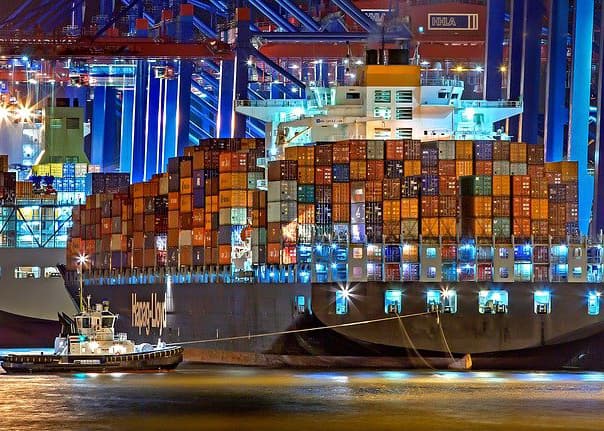Supply Chain Issues Still Plaguing North American PVF(Pipe, Valve, and Fitting) Industry

Image Description: View of Cargo ship in the port
October 2021 marks the fourth quarter of this year that the North American Pipe, Valve, and Fitting(PVF) industry continues to deal with supply chain uncertainties following the post-COVID-19 decline of the market. As the industry struggles to recover from the damage done and adapt to the current state of the international market, various obstacles continue to plague the industry. These include supply chain dysfunctions, shortages of critical raw materials, shipping delays, price escalations, and skilled and unskilled labor shortages.
For example, September of this year saw these price escalations:
- A $60/ton increase in the price of steel.
- A 20% price increase in tubular products by major pipe manufacturers.
- Carbon steel butt-welding fittings saw a price increase of about 10% by a major domestic manufacturer (citing the cause of the escalation as increased costs of freight charges and raw materials).
Other factors that have contributed to the price hike in the end products of the North American PVF industry include the availability of raw materials, rising raw material costs, shortage of qualified drivers, and delays of offshore material. Therefore, the supply chain issue plaguing the industry looks set to continue next year, fueling further inflation. Notably, the cost of transporting a container from Asia to Los Angeles is 6 times greater than it was a year ago, while the cost of transporting a container to Europe is 10 times greater.
On the distributor side, the disruption and dysfunction of the supply chain and rising steel prices are major causes of concern for the PVF industry. Steel prices are currently 30 to 40% higher than they were at the end of 2020, and supply struggles to meet demand due to the production pause during the months following the onset of COVID-19.
However, as the situation continues to deteriorate, distributors and manufacturers begin to adapt to the current circumstance in the industry. For example, as inquiries for 100% domestic melt and make continue to circulate, major manufacturers are holding tight on dialing down their inventory, while mid-size manufacturers are making sure to keep inventory levels at a certain point to assist the major manufacturers.
Dan O’Neil, a sales representative for H. A. O’Neil Co., says that while there is still a long road to recovery, things are beginning to pick up concerning certain products. For example, those items where inventory had started to dwindle at the end of 2020 are bouncing back, while frac and drilling products are showing signs of renewed life.
However, due to many obstacles and variables, it is hard to make predictions too far into next year. Most general machine shops continue to struggle to stay in business unless they have a specialty product.
It seems that the effects of COVID-19 have far-reaching consequences for many of our major and essential industries, a fact that most Americans are now seeing for the first time. According to surveys, 87% of Americans have been affected by supply chain issues in the American PVF industry, while almost half of all Americans admit that prior to the COVID-19 pandemic, they had never considered how deeply the supply chain affects their daily lives.